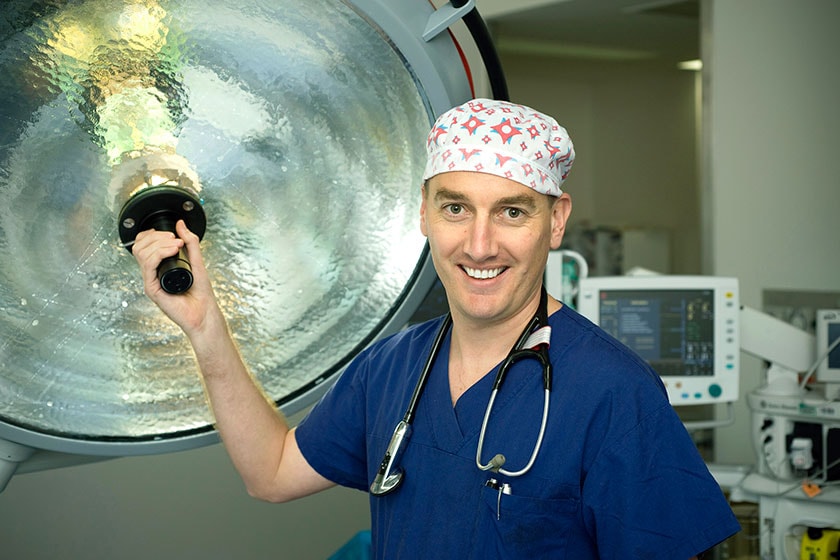Surviving amniotic fluid embolism is more than just luck
29 Mar 2019

29 March 2019
“Amniotic fluid embolism is one of the most feared complications of pregnancy. It is unpredictable and unpreventable and can rapidly be fatal for women and their babies,” Clinical Professor McDonnell said.
“It is vital that the onset of the condition is recognised, and that the mother is given advanced life support as soon as possible. Even when this occurs she may not survive.”
He said that local mum Jill Stevensen survived an amniotic fluid embolism (AFE) during the birth of her daughter at Subiaco nearly four years ago because she was at the right place.
He said that Jillian had a healthy birth at St John of God Subiaco Hospital – but 30 minutes after daughter Zara was born she suffered a sudden AFE.
Clinical Professor McDonnell said that her survival was down to a combination of factors – the rapid recognition of the condition by the staff caring for her, the availability of an on-site 24 hour blood transfusion service, a dedicated obstetric operating theatre and Intensive Care Unit.
“We don’t know why this happens and we can’t predict it, and we need rapid life support services when it does happen,” he said.
Clinical Professor McDonnell said it was not uncommon during pregnancy or childbirth for the amniotic fluid surrounding a foetus to escape into the mother’s bloodstream.
But on rare occasions, the mother can suffer an extreme immune response to this happening, and she may go into rapid respiratory failure, cardiac arrest, and haemorrhage – an AFE.
He said Jillian may not have survived if she had delivered in an environment that did not have access to the advanced life support measures required.
“Jillian was very close to having a cardiac arrest – she required a very large amount of blood and blood products in a very short amount of time,” he said.
“St John of God Subiaco has a phenomenal transfusion and laboratory service, and there is an operating theatre in maternity – this was key for Jillian because she was so sick that she would not have survived being transferred to another floor to a general operating theatre.
“She needed over 40 units of blood and blood products and to be on life support to be able to survive.”
Jillian said that while she was physically well, it had taken her years to recover from the trauma of the event.
“I feel so lucky that I had the people around me that I did, and that I was at this particular hospital with the right technology and services,” she said.
“When I learned later that I had nearly died and that the anaesthetist that happened to be caring for me, Clinical Professor McDonnell, was also an international expert on the condition, I felt that the stars must have aligned for this to happen and for me to survive.”
Clinical Professor McDonnell is the lead investigator for Amniotic Fluid Embolism for the Australasian Maternity Outcomes Surveillance System.
Fact file
- AFE occurs in Western Australia about twice a year – about once in every 15,000 to 20,000 births.
- AFE used to be the leading cause of maternal deaths in Australia and New Zealand, and had a 60 to 80 per cent mortality rate.
- Due to advances in recognition and treatment, the mortality is now approximately 20 per cent.

You may be interested in

